
Arginine long 3-IGF-1, abbreviated as IGF-1 LR3 or LR3-IGF-1, is a synthetic protein and elongated analog of human insulin-like growth factor 1 (IGF-1).
WHAT IS IGF-1?
Insulin-like growth factor 1 (IGF-1) is a vital protein that plays a critical role in human growth and development. This recombinant human protein, which belongs to the family of insulin-like growth factors, is composed of 70 amino acids and functions similarly to insulin. It is involved in the regulation of various bodily processes, including growth, development and cellular differentiation, through endocrine, autocrine and paracrine pathways.
One of the intriguing aspects of IGF-1 is its connection to aging. Research suggests that mutations in the IGF-1 gene can increase lifespan in laboratory animals, highlighting their potential impact on longevity. In children, IGF-1 is essential for stimulating cell growth and differentiation, while in adults it continues to exert anabolic effects, promoting tissue growth and maintenance.
IGF-1 operates within a complex network of growth factors, receptors, and binding proteins that mediate cell proliferation, differentiation, and apoptosis. These growth factors are low-molecular-weight proteins found in nearly all tissues, where they regulate cell division, growth, and migration. In the skin, for example, they are crucial for the migration and development of epithelial cells and stimulate cell division.
Often referred to as somatomedin C, IGF-1 serves as a key mediator of the effects of growth hormone (HGH). It is produced primarily by hepatocytes of the liver in response to growth hormone stimulation. The production of IGF-1 by the liver is influenced by various hormones, including sex steroids, thyroid hormones, glucocorticoids, and insulin. Insulin, androgens and estrogens tend to increase IGF-1 secretion, while glucocorticoids inhibit it. This interaction explains the synergy between these hormones in growth and development processes and the inhibitory effect of glucocorticoids on growth and puberty.
Throughout life, IGF-1 levels fluctuate, peaking during adolescence and declining during childhood and old age. Despite these variations, IGF-1 remains a crucial anabolic hormone. It is secreted by various tissues, of which the liver is the primary source, releasing IGF-1 into the bloodstream to act as an endocrine hormone. Other tissues, including cartilage cells, also secrete IGF-1, where it functions locally as a paracrine hormone.
In recent years, IGF-1 has attracted attention in the sports world as a doping agent, appearing in numerous high-profile doping cases. Its ability to enhance growth and performance makes it a substance of interest and concern in sporting communities.
WHAT IS THE DIFFERENCE BETWEEN IGF-1 AND IGF-1 LR3?
Insulin-like growth factor 1 (IGF-1) and its extended variant, IGF-1 LR3, share many similarities but also show distinct differences that impact their functions and applications. IGF-1 is a naturally occurring protein in the human body that is crucial for cell growth, development and differentiation. It is composed of 70 amino acids and works by binding to IGF-1 receptors, influencing various physiological processes.
IGF-1 LR3, on the other hand, is a modified form of IGF-1, designed to have a longer half-life and greater stability. This variant includes 13 additional amino acids at the N terminus, replacing the original third amino acid, glutamic acid, with an arginine. This modification significantly reduces the binding affinity of IGF-1 LR3 to IGF-binding proteins, which typically regulate the availability and activity of IGF-1. As a result, IGF-1 LR3 remains active in the bloodstream for a longer period, improving its effectiveness in promoting growth and anabolic processes.
The prolonged half-life of IGF-1 LR3 makes it particularly valuable in both medical and athletic contexts. Medically, it offers potential therapeutic benefits for conditions that require prolonged IGF-1 activity, such as muscle wasting diseases and growth failure. In sports and bodybuilding, its prolonged action and powerful anabolic effects make it a sought-after agent for improving muscle growth and performance. However, this also raises concerns regarding its misuse and ethical implications in competitive sports.
In summary, while both IGF-1 and IGF-1 LR3 play vital roles in growth and development, the key difference lies in the engineered structure of IGF-1 LR3, which confers a longer half-life and greater power. This distinction not only broadens its potential therapeutic applications, but also highlights the need for careful regulation to prevent abuse in sporting environments.
MAIN EFFECTS
IGF-1 is an extremely potent anabolic that, in combination with anabolic steroids, gives a noticeable increase in lean muscle mass. At the same time, IGF-1 has many other useful properties that together create the maximum boost for growth. IGF-1 is a product that can increase your results when other methods no longer give a significant effect.
Anabolic effects
- Increased muscle mass (various exposure modes)
- Muscle hyperplasia (unique property of increasing the number of muscle cells)
- Accelerated protein synthesis
- Regeneration of tendon tissue (increases collagen synthesis)
- It has a repairing effect on cartilaginous tissue
- Increases the effectiveness of anabolic steroids (increases the number of androgen receptors)
- Restores and strengthens bone and cartilage tissue
Support of the cardiovascular system
- Improves cardiac output, systolic volume, contractility and ejection fraction.
- Stimulates tissue contractility and remodeling in humans to improve cardiac function after myocardial infarction.
- Improves the lipid profile
- Reduces insulin levels, increases insulin sensitivity and promotes glucose metabolism
- Reduce the overall risk of cardiovascular complications
- Helps fight inflammatory processes
Nervous tissue
- Increases the transport of glucose into the nervous tissue
- Protects neurons at low glucose levels, preventing cell destruction.
- They play an important role in the restoration of neurons and nervous tissue in general
Other effects
- Regulate the expression of genes that increase life expectancy.
- Accelerates skin restoration, prevents skin aging
- Improved immunity
Mechanism of action

Insulin-like growth factor 1 (IGF-1) is a vital protein that plays a crucial role in the regeneration and repair of various tissues in the human body, including bone, muscle, skin and cartilage. When IGF-1 interacts with bone and cartilage tissue, it binds to specific receptors on osteoblasts and chondroblasts, cells responsible for the growth and repair of bone and cartilage. This bond stimulates the metabolic activity of these cells, leading to accelerated healing of fractures and other bone injuries. IGF-1 also reduces inflammation in damaged areas, enhancing the activity of cells involved in tissue renewal (Yakar et al., 2019).
Additionally, the metabolic effects of IGF-1 extend beyond growth and repair. It plays a significant role in nutrient signaling, coordinating the metabolism of proteins, fats and carbohydrates in various cell types. This is achieved through the stimulation of IGF-1 receptors, which signal the cells about the availability of nutrients. This coordination helps ensure that cells receive the nutrients needed for growth and maintenance. Like insulin, IGF-1 is regulated by nutritional status and participates in glucose homeostasis. It lowers blood glucose levels by increasing glucose uptake into cells and reducing insulin secretion, which increases insulin sensitivity (Samani et al., 2007).
In addition to its role in metabolism, IGF-1 also influences protein metabolism and lipolysis. It works synergistically with growth hormone (GH) to improve the breakdown of fat and promote ketogenesis. This synergy between IGF-1 and GH is essential for maintaining energy balance and supporting growth processes. Studies have shown that low levels of IGF-1 are often associated with metabolic syndrome, a set of conditions that increase the risk of heart disease, stroke and diabetes. This highlights the importance of IGF-1 in maintaining overall metabolic health (Clemmons, 2004).
Effects on muscles
IGF-1 has a profound impact on muscle tissue, promoting muscle growth and repair. This is achieved primarily through the stimulation of satellite cells, which are stem cells located in muscle tissue. When muscle tissue is damaged, IGF-1 activates these satellite cells, causing them to multiply and differentiate into new muscle cells. This process not only repairs damaged muscle fibers but also leads to an increase in muscle mass. IGF-1’s ability to enhance muscle regeneration makes it a key treatment for conditions involving muscle atrophy, such as muscular dystrophy (Ahmad et al., 2020).

The molecular mechanisms through which IGF-1 stimulates muscle growth involve different signaling pathways. One of the major pathways is the PI-3 kinase pathway, which leads to the activation of protein kinase B (AKT). AKT then promotes protein synthesis by activating the mTOR pathway, a crucial regulator of cell growth and protein synthesis. Furthermore, IGF-1 improves the transport of amino acids into muscle cells, providing the elements necessary for protein synthesis. IGF-1 also inhibits protein degradation by downregulating the expression of genes involved in muscle atrophy, such as MuRF1 and MAFbx (Lai et al., 2004).
In addition to its anabolic effects, IGF-1 also has anti-catabolic properties. Counteracts the effects of inflammatory cytokines that promote muscle degradation. By inhibiting these catabolic pathways, IGF-1 helps preserve muscle mass and function, even under conditions of stress or disease. This dual role of promoting muscle growth and preventing muscle breakdown makes IGF-1 an essential factor in maintaining muscle health and function (Lai et al., 2004).
Effects on tendon tissue
Tendon injuries are notoriously slow to heal, often resulting in fibrovascular scarring that compromises the mechanical properties of the tendons and increases the risk of reinjury. IGF-1 has been shown to significantly improve tendon healing by promoting cell proliferation, DNA synthesis, and matrix production, particularly collagen I, which is the main component of tendon tissue. This makes IGF-1 a potent anabolic agent for improving tendon repair and function (Miescher et al., 2023).

The mechanism through which IGF-1 promotes tendon healing involves several cellular processes. When applied to cultures of tenocytes – cells that make up tendons – IGF-1 stimulates these cells to proliferate and produce more extracellular matrix components, including collagen. This increased matrix production provides the structural support needed for tendon repair. Furthermore, IGF-1 has been shown to reduce inflammation in the injured tendon, further supporting the healing process by creating a more favorable environment for tissue regeneration (Disser et al., 2019).
In preclinical animal models and human patients, IGF-1 has demonstrated its efficacy in improving tendon healing outcomes. For example, studies have shown that applying IGF-1 to injured tendons in animal models accelerates the healing process, reduces scarring, and improves the mechanical properties of healed tendons. These findings suggest that IGF-1 could be a valuable therapeutic agent for the treatment of tendon injuries in the clinical setting. (Doessing et al., 2010)
Effects on cartilage tissue
IGF-1 plays a crucial role in the maintenance and repair of cartilage tissue, which is essential for joint health and function. Cartilage is a strong, smooth elastic tissue that covers and protects the ends of long bones at the joints. It also serves as a cushion between the bones, allowing for smooth, painless movement. IGF-1 regulates cartilage metabolism by promoting anabolic processes and inhibiting catabolic processes, thus maintaining cartilage integrity and function (Wen et al., 2021).

The primary cells responsible for maintaining cartilage are chondrocytes. IGF-1 stimulates these cells to produce extracellular matrix components, such as collagen and proteoglycans, which are essential for the structure and function of cartilage. In addition to promoting matrix synthesis, IGF-1 inhibits the activity of cartilage-destroying enzymes, such as matrix metalloproteinases (MMPs). This dual action of promoting anabolic processes and inhibiting catabolic processes helps preserve cartilage tissue and prevent its degeneration (Vedadghavami, 2022).
Studies have shown that IGF-1 can slow the progression of osteoarthritis, a degenerative joint disease characterized by the breakdown of cartilage. Effective delivery of IGF-1 to damaged cartilage is critical to its therapeutic effects. Techniques such as intra-articular injections and localized delivery systems are being explored to ensure that IGF-1 reaches the target tissue in sufficient concentrations. Animal studies have shown that continuous administration of IGF-1 can prevent cartilage degradation and promote repair, highlighting its potential as a treatment for osteoarthritis (Wen et al., 2021).
Bone tissue
IGF-1 significantly influences bone metabolism by promoting both bone resorption and formation. This dual action is fundamental to bone remodeling, a continuous process in which old bone tissue is replaced by new bone tissue. IGF-1 stimulates osteoblasts, the cells responsible for bone formation, to produce new bone matrix. It also promotes the activity of osteoclasts, the cells responsible for bone resorption, to remove old or damaged bone, facilitating the replacement process (Canalis, 2009).
The effects of IGF-1 on bone health are particularly evident in conditions involving bone fractures and osteoporosis. Studies have shown that administering IGF-1 to fracture patients can accelerate bone healing and improve clinical outcomes. For example, IGF-1 treatment has been found to increase bone mineral density and improve the structural properties of healed bone, making it stronger and less prone to re-injury (Locatelli & Bianchi., 2014).
In addition to its direct effects on bone cells, IGF-1 also influences bone health by interacting with other hormones, such as parathyroid hormone (PTH) and vitamin D. These interactions help regulate calcium homeostasis and they ensure that bones receive adequate nutrients for growth and growth. repair. By modulating these hormonal pathways, IGF-1 plays a critical role in maintaining bone health and preventing diseases such as osteoporosis (Canalis, 2010).
IGF-1 and glucose metabolism
IGF-1 has significant effects on glucose metabolism, particularly in improving insulin sensitivity and regulating blood glucose levels. Stimulates glucose transport into muscle cells via IGF-1 receptors or hybrid insulin/IGF-1 receptors. By increasing glucose uptake into muscle cells, IGF-1 helps lower blood glucose levels, thus reducing the need for insulin secretion (Clemmons, 2004).

Description of the metabolic actions elicited by IGF-1. IGF-1 is released primarily by the liver and improves insulin sensitivity by suppressing insulin secretion, in turn leading to increased lipolysis in adipose tissue and promoting NEFA use in muscle and liver . Abbreviations used: CNS: central nervous system; GH: growth hormone; IGF-1: insulin growth factor-1; FFA: free fatty acids; WAT: white adipose tissue
In animal models, high concentrations of free IGF-1 have been shown to inhibit gluconeogenesis, the process by which glucose is produced from non-carbohydrate sources in the liver. This inhibition helps reduce blood glucose levels and improves overall glucose homeostasis. Furthermore, studies have shown that removal of the insulin receptor in mice decreases blood glucose levels in response to IGF-1, indicating that IGF-1 may compensate to some extent for insulin’s role in glucose metabolism (Clemmons, 2004).
Clinical studies have also highlighted the importance of IGF-1 in maintaining glucose metabolism. For example, research has shown that low serum levels of IGF-1 are associated with impaired glucose tolerance and an increased risk of type 2 diabetes. Conversely, higher levels of IGF-1 are related to improved sensitivity to insulin and lower blood glucose levels. These findings suggest that IGF-1 plays a crucial role in preventing metabolic disorders and maintaining glucose homeostasis (Rajpathak et al., 2014).
IGF-1 and aging
The IGF-1 pathway is highly conserved in various species, from invertebrates to mammals. This pathway is crucial for regulating growth, development and lifespan. In mammals, the IGF-1 pathway involves a complex network of signals that influence cellular processes such as growth, metabolism, and aging. IGF-1 exerts its effects through the IGF-1 receptor, which activates a cascade of intracellular signaling pathways that promote cell growth and survival (Kenyon, 2010).

GH/IGF-1 axis factors known to influence aging. The embryonic expressed genes PROP1 (encoding PROP-1) and POU1F1 (encoding PIT-1) are involved in the development of the pituitary gland, including the differentiation of somatotrophic cells of the pituitary gland.
If an insulin/IGF-1 pathway exists in invertebrates, in higher vertebrates, including mammals, this pathway is divided into two. These two pathways have overlapping functions, but insulin is primarily involved in regulating metabolism, and the growth hormone/IGF-1 pathway plays an important role in the processes of growth, development, and possibly life expectancy. It was the IGF-1 cascade genes that became the first discovered “aging genes,” that is, genes whose damage led to an increase in life expectancy.
In humans, changes in IGF-1 levels and signaling have been linked to age-related diseases. Low levels of IGF-1 are often associated with an increased risk of cardiovascular disease, diabetes and neurodegenerative disorders. Conversely, higher levels of IGF-1 are linked to better health outcomes and a reduced risk of these conditions. These findings highlight the importance of IGF-1 in promoting healthy aging and preventing age-related diseases (Kenyon, 2010).

Effects on the skin
IGF-1 plays a crucial role in maintaining skin health and promoting wound healing. It acts as a regulator and stimulator of cell division in epithelial tissue, promoting the growth and metabolism of cells in the deeper layers of the skin. This leads to accelerated collagen synthesis and faster healing of both superficial and deep wounds. IGF-1 also plays a key role in maintaining epidermal homeostasis, helping to prevent skin aging and maintain a youthful appearance (Tavakkol et al., 1999).
The mechanism through which IGF-1 promotes skin health involves several cellular processes. When the skin is damaged, IGF-1 stimulates the proliferation of keratinocytes, the primary cells of the epidermis, and fibroblasts, the cells responsible for the production of collagen and other components of the extracellular matrix. This increased cell proliferation and matrix production helps repair damaged skin and restore its structural integrity. Furthermore, IGF-1 enhances the migration of these cells to the wound site, further accelerating the healing process (Zhang et al., 2024).

The influence of aging on the expression of insulin-like growth factor 1 (IGF-1) in the skin and its role in ultraviolet-B (UVB)-induced carcinogenesis.
Studies have shown that IGF-1 can also protect the skin from the effects of aging. By promoting collagen synthesis and reducing the degradation of collagen fibers, IGF-1 helps maintain skin elasticity and firmness. This anti-aging effect is particularly important for preventing the formation of wrinkles and maintaining a smooth, youthful complexion. Additionally, IGF-1 has been found to reduce skin inflammation, which may help prevent chronic skin conditions and improve overall skin health (Muraguchi et al., 2019).

Effects on nervous tissue
IGF-1 has significant neuroprotective effects, improving the survival and function of neurons. It increases the transport of glucose into neurons, providing them with the energy necessary for correct functioning. This is especially important in conditions of low glucose levels, where IGF-1 helps prevent neuronal damage and cell death. Furthermore, IGF-1 stimulates neuronal RNA synthesis and promotes the formation of axons, the long projections of neurons that transmit nerve signals (Dyer et al., 2016).
In the nervous system, IGF-1 also enhances the proliferation of glial cells, which provide support and protection to neurons. These glial cells include astrocytes, oligodendrocytes, and microglia, each of which plays a crucial role in maintaining the health and function of the nervous system. By promoting the proliferation and function of these cells, IGF-1 helps create a supportive environment for neurons, facilitating their growth, repair, and survival (Carson et al., 1993).
The neuroprotective effects of IGF-1 are particularly relevant in neurodegenerative diseases such as Alzheimer’s and Parkinson’s disease. Research has shown that IGF-1 can reduce the buildup of toxic proteins, such as beta-amyloid plaques in Alzheimer’s disease, and improve the clearance of these proteins from the brain. This helps protect neurons from damage and supports cognitive function. Furthermore, IGF-1 has been found to promote the regeneration of damaged neurons, offering potential therapeutic benefits for neurodegenerative conditions (Dyer et al., 2016).
Effects on the cardiovascular system
IGF-1 plays a specialized role in cardiovascular health by promoting the development and function of the heart and blood vessels. It improves cardiac output, stroke volume, contractility and ejection fraction, all crucial for maintaining efficient cardiac function. IGF-1 also stimulates the remodeling of heart tissue, helping to repair damage after a myocardial infarction and improve overall heart health (Macvanin et al., 2023).

The cardiovascular effects of IGF-1 are mediated through several mechanisms. First, IGF-1 promotes the proliferation and survival of cardiomyocytes, the muscle cells of the heart. This helps maintain the structural integrity and contractile function of the heart. Second, IGF-1 stimulates angiogenesis, the formation of new blood vessels, which improves blood flow and oxygen supply to the heart and other tissues. Third, IGF-1 has anti-apoptotic and anti-inflammatory effects, reducing cell death and inflammation in the cardiovascular system (De Giorgi et al., 2022).

Clinical studies have shown that low levels of IGF-1 are associated with an increased risk of cardiovascular disease, including coronary heart disease and stroke. Conversely, higher levels of IGF-1 are linked to better cardiovascular health and a reduced risk of these conditions. For example, in one prospective patient cohort study they found that participants with higher IGF-1 levels had a 55% lower relative risk of myocardial infarction than those with lower levels (Macvanin et al., 2023) .
Effects on immunity
IGF-1 has a significant impact on the immune system, improving the function and proliferation of various immune cells. It increases populations of T lymphocytes, B lymphocytes and natural killer cells, all of which play a crucial role in the body’s defense against infection and disease. IGF-1 also enhances the activity of T lymphocytes, which are essential for cell-mediated immunity and the destruction of infected or cancerous cells (Alpdogan et al., 2003).

The immune-boosting effects of IGF-1 are mediated through several mechanisms. IGF-1 stimulates the proliferation of immune cells by binding to its receptors on their surface, leading to increased cell division and growth. This is particularly important for the expansion of immune cell populations in response to infections or immunological challenges. Furthermore, IGF-1 improves the function of these cells by promoting their activation and increasing their ability to respond to pathogens (Dyer et al., 2016).
Research has shown that IGF-1 can also protect immune cells from apoptosis, or programmed cell death, which is critical for maintaining a robust immune response. For example, studies have shown that IGF-1 can inhibit the apoptosis of macrophages and neutrophils, two key types of immune cells involved in the body’s initial response to infections. By preserving the vitality of these cells, IGF-1 helps to guarantee an effective and supported immune response (Alpdogan et al., 2003).
n
application of IGF-1 LR3
Nigf-1 LR3 is often the secret weapon of professional bodybuilders. It is the use of this product that represents the following step to progress after anabolic steroids and growth hormone, which have long since gained popularity among lovers of Ped.
Nil Product IGF-1 LR3 has a very wide action and can be used both to burn fat, accelerate the healing of lesions and strengthen the joint-legal apparatus, increase muscle mass and accelerate recovery after the effort, since The substance also affects the recovery of the nervous system. The IGF-1 LR3 software has a rich range of properties suitable for many purposes and will be an excellent addition to any of your courses, whether it is a set of muscle mass or a pre-agonistic training.
n
dosage:
n beginners: 20-40 mcg per day
n intermediate: 40-60 mcg per day
n advanced: 60-100 mcg per day
n
Duration of the cycle:
Nin genre, 4-6 weeks, followed by a pause of equal duration to avoid desensitization.
n administrative program:
n frequency: daily injections
n frequency: daily injections
n timing: administered in the morning or after training to maximize absorption and effectiveness.
n Injection site: subcutaneous or intramuscular injections, rotating sites to prevent damage damage.
n example
n overdose
nil overdose can cause the side effects listed above. Very often it is hypoglycaemia, or a decrease in sugar below the threshold of 3.5 mmol/l. In this case, it is necessary to eat a certain amount of carbohydrate -based foods until the condition is stabilized.
n administration methods
Intamuscular or subcutaneous ninjections using insulin syringes.
n detection during anti -doping tests
NSE interrupts the taking of the drug three days before the test, nobody will be able to detect the substance in the blood.
n blood tests for IGF-1 (Somatomedine C)
ndi usually, bioactivity of the growth hormone in the human body is determined by analyzing the somatomedin C a few weeks after the first injection. In this way we can determine the effectiveness of the growth hormone on the body, because most of its effects occurs through the IGF-1 protein. This because the growth hormone causes the release of IGF-1. But the growth hormone also causes the release of IGFBP, a protein that binds IGF-1. The complex-IGF-1: IGFBP circulates in the blood. In the blood tests after several weeks of administration of the exogenous growth hormone, we can see the results of the test for the homatomodine C – 500 ng/ml or even 700 ng/ml. But it is linked to IGF-1, which is gradually released by the IGF-1 complex: IGFBP and does not act with the same strength as a separate protein causing an anabolic effect. Product, and acts quickly, with force and its specific effectiveness is much higher than that of the IGF-1 complex: IGFBP, which you can see in the blood tests when using growth hormone. That’s why according to the blood test for Somatomedin C that you do in the laboratory. It is very difficult to determine the effectiveness of the drug. In most cases, the IGF-1 free injected will not be detected in the laboratory. Instead, you will see the results of the IGF-1 complex: IGFBP, which does not give a clear picture of the true increase of IGF-1 R potential risks among Peds fans, there is information that connects IGF-1 with the development of cancer. Although this alleged correlation has a great impact on the mass media, most of the clinical and epidemiological relationships up to now have not revealed a causal relationship between hormonal growth therapy and as a consequence of an increase in IGF-1 levels and an increase in the Cancer risk (Werner & Amp; Amp; On the basis of these data, the IGF-1 drug itself does not cause oncology, but has only a contraindication to be used if you already have cancer or its predisposition (high cancer markers). The growth hormone and IGF-1, even in high pharmacological doses, are not able to induce a malignant transformation. Phases of the cell cycle. How to use IgH-1 LR3 all peptide hormones in our product line (with the exception of liquid growth hormone) are freeze-dried. solvent (bacteriostatic water in a 1 ml Ampouel). This solvent is used to prepare a solution, which will therefore be kept in liquid form. ampoules with solvent (bacteriostatic water) in an aqueous environment, the peptides degrade quickly. This is partly due to the presence of bacteria, for which water provides an ideal environment for growth and reproduction. The injection water is sterile. However, once the package is opened (usually an ampouel or a vial), sterility is compromised. To maintain sterility as long as possible, benzilic alcohol or metacresol is added for their strong antibacterial properties. This treated water is called bacteriostatic, which means that bacteria remain in a “static state” and do not reproduce. Growth hormone and other peptides in a bacteriostatic environment can maintain their stability and resist degradation for much more time. how to prepare the solution
- n
- Fill the syringe with water. Generally, the vial content is dissolved in a milliliter of water.
- Add water to the vial containing the freeze -dried powder. Tilt the vial so that the needle touches the wall of the vial.
- avoids letting the thinner contact the dried powder directly. The thinner should slowly flow along the sides of the vial (do not pour it all at once and avoid running).
- Once all the solvent has been added to the vial with the peptide, gently turbine (but do not shake) the vial until the freeze -dried dust is dissolved and a light liquid is obtained. The solution is now ready for use.
- Store the solution prepared at a temperature of 2-8 ° C.
n
n
n
n
n siringhe for injection  we recommend using syringes just out of the package to prevent infection (the reuse of syringes increases the risk of infection). Insulin syringes are generally used for subcutaneous injections and can have a removable needle or a fixed needle. One of the most popular injection needles is the G30. Sirings are usually available in 1 ml and 0.5 ml of size. Insulin syringes are available in U40 and U100 formats, which correspond to the insulin content of 40 units per 1 ml and 100 units per 1 ml, respectively. Each syringe is specifically designed for a particular type of insulin. However, this does not apply to the growth hormone units or peptides mg, therefore both types of syringes can be used with adequate adjustments to determine the correct dosage. These syringes have different signs and referring to these signs, it is possible to determine the number of units of the growth hormone to be injected. Below, we provide an image that shows the dosage of various peptides if mixed with 1 ml of water for Siringhe U100 and U40.
we recommend using syringes just out of the package to prevent infection (the reuse of syringes increases the risk of infection). Insulin syringes are generally used for subcutaneous injections and can have a removable needle or a fixed needle. One of the most popular injection needles is the G30. Sirings are usually available in 1 ml and 0.5 ml of size. Insulin syringes are available in U40 and U100 formats, which correspond to the insulin content of 40 units per 1 ml and 100 units per 1 ml, respectively. Each syringe is specifically designed for a particular type of insulin. However, this does not apply to the growth hormone units or peptides mg, therefore both types of syringes can be used with adequate adjustments to determine the correct dosage. These syringes have different signs and referring to these signs, it is possible to determine the number of units of the growth hormone to be injected. Below, we provide an image that shows the dosage of various peptides if mixed with 1 ml of water for Siringhe U100 and U40. subcutaneous injections After having diluted the peptide with water , is ready for use. All peptides are injected subcutaneously or intramuscularly using insulin syringe. you will need:
- n
- Alcohol notch
- insulin syringe
- bottle with the prepared solution
n
n
n injection procedure:
- n
- Remove the bottle cap.
- Plete the bottle rubber cap with alcohol.
- Take a insulin syringe and insert it in the bottle.
- draws the required quantity of solution in the syringe.
- clean the injection site with an alcohol swab.
- Keep the needle with an angle of 30-45 degrees and inject.
- slowly inject the solution.
- After finishing, keep the needle in place for 10 seconds before removing it to avoid leaks of the injected liquid.
n
n
n
n
n
n
n
n  storage The correct conservation of peptide drugs is essential to maintain their effectiveness. Below are the guidelines for the storage of peptides in various forms. storage of the form of dust the form of dust (not mixed) can be stored at room temperature or in the refrigerator. The freeze -dried powder must be kept away from direct sunlight and excessive heat. In appropriate conservation conditions, peptides in dry form can be kept for a maximum of 3 years to 2-8 ° C and up to 2 years at 15-30 ° C. If the vial is damaged and the air enters, the Active substance will quickly decompose out of the refrigerator, keeping only about half of its concentration within two weeks. Therefore, if the integrity of the packaging is uncertain, it is better to keep the peptide in the refrigerator. storage of bacteriostatic water bacteriostatic water must always be stored in the refrigerator at 2-8 ° C to maintain its own property. If the peptide and bacteriostatic water are kept together, keep the whole set in the refrigerator. memory of the solution After mixing the dust with water from the ampouel, the peptide solution must be kept in the refrigerator. Without refrigeration, the peptide begins to degrade and in a few days the molecules will break completely. The storage duration for each variety varies. For example, growth hormone can be kept in the refrigerator for only 2-3 days, while the HCG can last about 5 weeks. On average, other peptides can be kept for at least 30 days, although some can last even longer. The degradation rate also depends on the number of bacteria introduced when they perform the vial, which is inevitable to a certain extent. !!! Never keep peptides in the freezer !!! uses with anabolic steroids it is also perfectly appropriate to use IGF-1 with anabolic steroids and other drugs with similar effects. IGF-1-1 improves the effects of anabolic steroids by increasing the number of androgen receptors. The IGF-1 drug is an extremely powerful anabolic which, in combination with AS, gives a very large increase in lean muscle mass. At the same time, IGF -1 has many other useful properties that together create the maximum background for growth. All the anabolic steroids act on the muscles through special structures – receptors. There is an opinion that if you use steroids for a long time, the number of these receptors decreases. The number of these receptors also decreases with age. In this case, it becomes necessary to use large doses of steroids. In 20 years, 300 mg of testosterone propionate act more powerful than 30 years. At 30, 600 mg are needed for the same effect. The IGF-1 activates the cells and increases the number of androgen receptors and, at 30, then 300 mg of testosterone propionate will act in the same way of 20 years.
storage The correct conservation of peptide drugs is essential to maintain their effectiveness. Below are the guidelines for the storage of peptides in various forms. storage of the form of dust the form of dust (not mixed) can be stored at room temperature or in the refrigerator. The freeze -dried powder must be kept away from direct sunlight and excessive heat. In appropriate conservation conditions, peptides in dry form can be kept for a maximum of 3 years to 2-8 ° C and up to 2 years at 15-30 ° C. If the vial is damaged and the air enters, the Active substance will quickly decompose out of the refrigerator, keeping only about half of its concentration within two weeks. Therefore, if the integrity of the packaging is uncertain, it is better to keep the peptide in the refrigerator. storage of bacteriostatic water bacteriostatic water must always be stored in the refrigerator at 2-8 ° C to maintain its own property. If the peptide and bacteriostatic water are kept together, keep the whole set in the refrigerator. memory of the solution After mixing the dust with water from the ampouel, the peptide solution must be kept in the refrigerator. Without refrigeration, the peptide begins to degrade and in a few days the molecules will break completely. The storage duration for each variety varies. For example, growth hormone can be kept in the refrigerator for only 2-3 days, while the HCG can last about 5 weeks. On average, other peptides can be kept for at least 30 days, although some can last even longer. The degradation rate also depends on the number of bacteria introduced when they perform the vial, which is inevitable to a certain extent. !!! Never keep peptides in the freezer !!! uses with anabolic steroids it is also perfectly appropriate to use IGF-1 with anabolic steroids and other drugs with similar effects. IGF-1-1 improves the effects of anabolic steroids by increasing the number of androgen receptors. The IGF-1 drug is an extremely powerful anabolic which, in combination with AS, gives a very large increase in lean muscle mass. At the same time, IGF -1 has many other useful properties that together create the maximum background for growth. All the anabolic steroids act on the muscles through special structures – receptors. There is an opinion that if you use steroids for a long time, the number of these receptors decreases. The number of these receptors also decreases with age. In this case, it becomes necessary to use large doses of steroids. In 20 years, 300 mg of testosterone propionate act more powerful than 30 years. At 30, 600 mg are needed for the same effect. The IGF-1 activates the cells and increases the number of androgen receptors and, at 30, then 300 mg of testosterone propionate will act in the same way of 20 years.
Effects
- n
-
- n
-
- n
- synergistic increase in muscle mass
- synergistic effect of fat combustion
- strengthens the action of anabolic steroids
- synergistic effect on the strengthening of bone tissue
n
n
n
-
n with the growth hormone (somatropin) the use of somatotropin at the same time can be advisable, even if it may not seem logical at first sight, however, many professional bodybuilders do this. If used together, their effects add up – as an anabolic effect for muscle growth and for the restoration and regeneration of cartilage and other collagen structures. In addition, the growth hormone and the IGF-1 together will increase the combustion of fats. It kept in mind that in addition to the beneficial effects, the presence of side effects can also occur. It should be understood that the level of IGF when using both drugs will increase significantly, so this use should not be prolonged. effects
- n
-
- n
-
- n
- synergistic increase in muscle mass
- synergistic effect of fat combustion
- synergistic effect on tendon repair
- synergistic effect on the strengthening of bone tissue
- Increase in the risk of side effects from excessive levels of IGF-1
n
n
n
n
-
n uses with insulin as the name IGF-1 suggests, has a structure similar to insulin and binds not only to its IGF1R receptor, but also to the insulin-and vice versa receptor. However, the affinity of bond for IGF1R and the insulin receptor, respectively, is different, with a high affinity of IGF-1 for IGF1R and about 10 times lower affinity for the insulin receptor. The affinity of insulin to its receptor is about 100 times higher than IGF1R. Furthermore, despite the similarity in the structure, IGF-1 and insulin show a different distribution in the tissues, a different internalization kinetics and a different subcellular distribution of hormonal receptors. Consequently, both hormones can influence similar paths, but at different degrees and, moreover, otherwise activate other paths located on the valley. This hormones can be compared in the plane of the effect on glucose metabolism in the body. When used together, a side effect such as hypoglycaemia (a drop in sugar levels) will be thus pronounced that it will create risks for life.
n
effects n
n
| time (weeks) n | Daily dosage of IGF-1 LR3 n n | ||
|---|---|---|---|
| 1-6 n | 20-100 mcg (consider the start with a lower dose to evaluate tolerance) n n | ||
| 7-12 n | widespread n n | ||
| 13-18 n | 20-100 mcg n n | ||
| 19-24 n | widespread n n n
Additional information
No account yet? Create an Account |

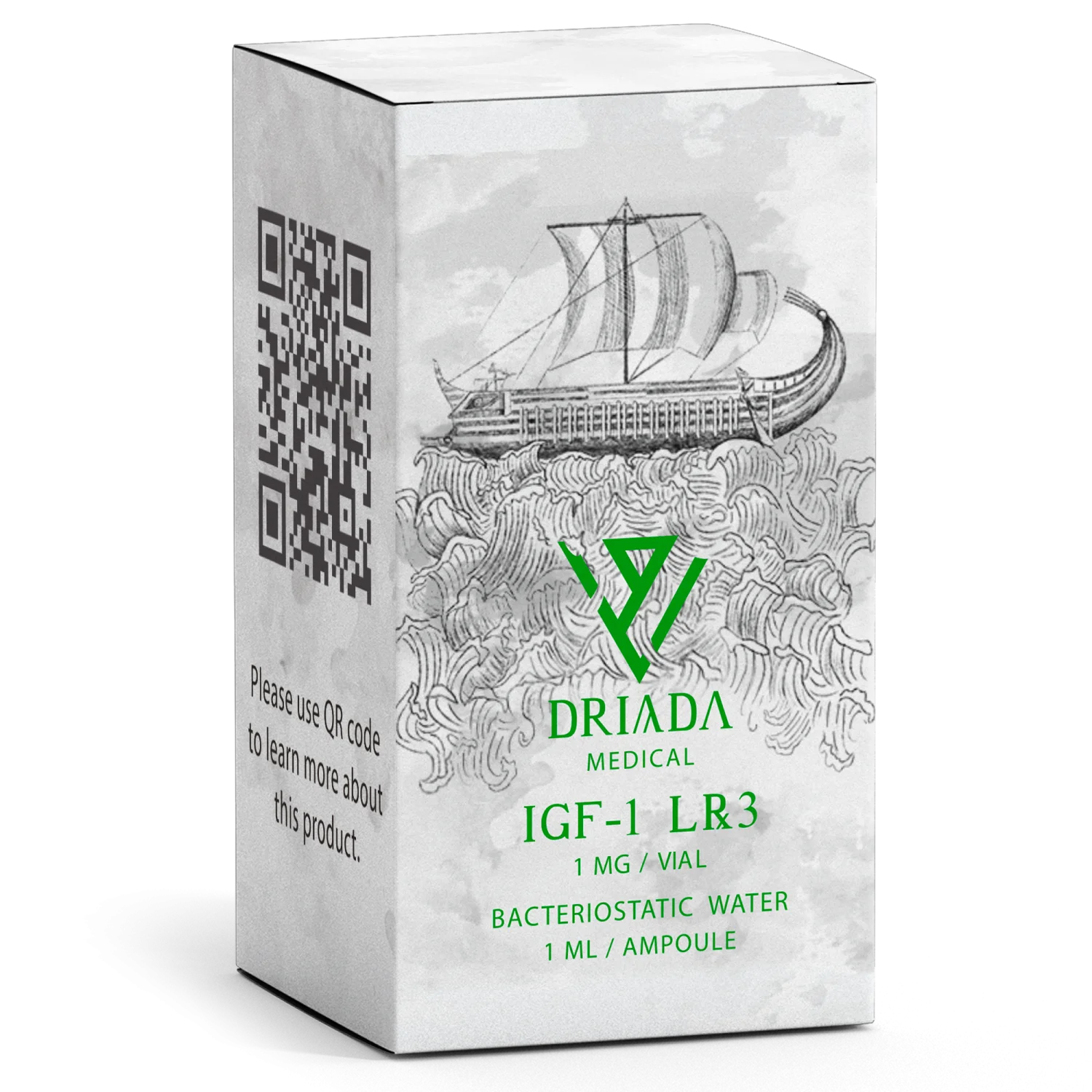



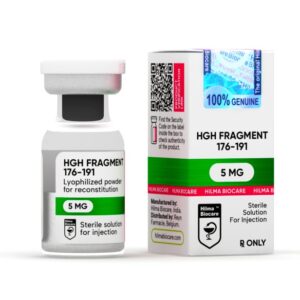
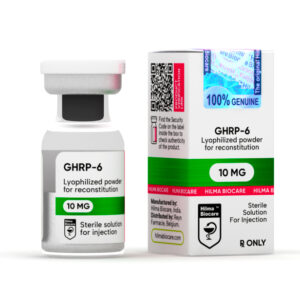

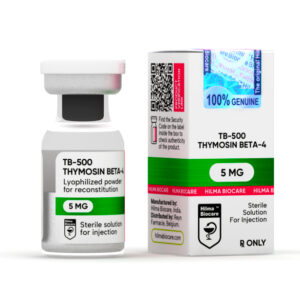


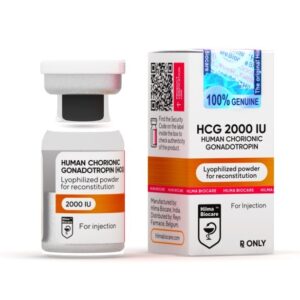
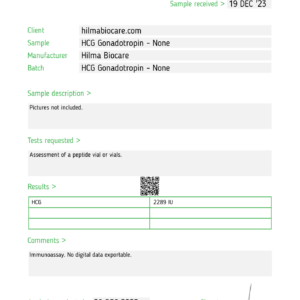
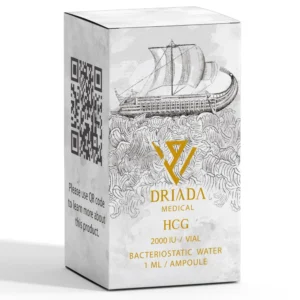

Reviews
There are no reviews yet.